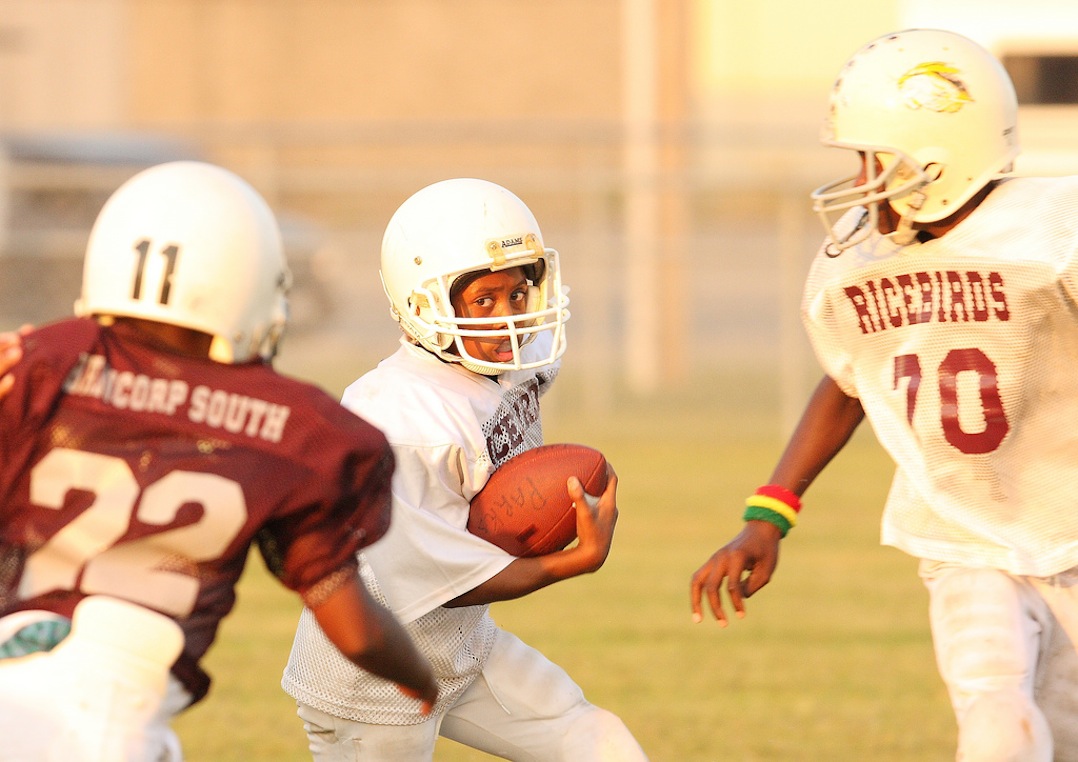WASHINGTON – Legislation parked in congressional committees would make concussion laws across the country more uniform, a move to better protect young athletes from repeated brain injury.
Most states have enacted some form of concussion legislation to protect young athletes due to increased attention to the long-term effects of hits to the head during games, but the Institute of Medicine highlighted variations among the laws – such as concussion education requirements for coaches – in a recent report.
A bill introduced by Sen. Dick Durbin, D-Ill., in September would set national “minimum requirements” and implement a “when in doubt, sit out” policy. Democrats introduced a similar version in the House last month.
“Some states may go above and beyond,” Durbin’s office said in an email, “but on the most basic level, it will fix much of the variation among states.”
The Institute of Medicine and the National Research Council investigated concussions among young athletes and found an ingrained resistance to treatment in high school and collegiate sports cultures, a higher incidence among high school compared with college athletes and higher concussion rates among athletes with prior concussions. Although the joint concussion committee did not look at state statutes individually or recommend specific legislation, some committee members pointed out the variations among state laws.
“Whether the requirements reflected in individual state statutes would actually be backed up by any sort of science, again there was concern on the part of committee members, just based upon personal experience, that this may be a well-intended move, but not strongly, in all states, supported by science,” said Committee Chairman Bob Graham.
Every state, including the District of Columbia, has passed a concussion law except Mississippi. Most follow Washington state’s Zackery Lystedt Law – the first player concussion safety law of its kind in the country.
The law requires, in part:
• Education of coaches, players and parents on the risks associated with concussions.
• Players and parents to sign consent forms, acknowledging the dangers of their sport and head injuries.
• Players to leave the game if they become concussed. A “licensed health provider” must clear athletes before they return to the field.
But after these basic requirements, the differences among state laws are significant.
According to Tom Gowen, a concussion law expert, states have different education requirements. Coaches and trainers might need to undergo concussion training every year in one state, but every three years in another.
Who can clear players, allowing them to return to play, can differ as well. While every state allows a medical doctor to make the decision, Gowen said some states also allow trainers to make the call. Some allow neuropsychologists.
“They’re the most appropriate actually,” Gowen said. “They do the most sensitive testing for mild brain injury. They’re more likely to pick things up than, say, a neurologist.”
The “scope of applicability,” as Gowen called it, changes across state lines. The scope determines if private and charter schools must abide by the rules as well as little leagues and other private sports organizations.
Penalties are relatively similar. In Pennsylvania, if a coach fails to bench a player after a suspected head injury, he or she faces suspension for the rest of the season, according to Gowen. A second violation gets another suspension and a third could cost a coach their job.
A reprimand for a coach in Texas could range from a day to three years, based on a decision from the state’s University Interscholastic League. And according to the Michigan Department of Community Health, schools can be “held liable for non-compliance in a [state] court of law.”
Gowen said a national law would provide uniformity, giving young athletes protection in states where laws don’t exist or are weaker, as well as reduce confusion when athletes travel across state lines. But he noted that critics of a federal law argue states should be able to tailor concussion laws to meet their own needs.
Political analysts have said the proposals pending in the House and Senate will face heavy hurdles as Republicans and Democrats spar over deadlines to pass a budget to avoid another government shutdown and to extend the debt ceiling.

